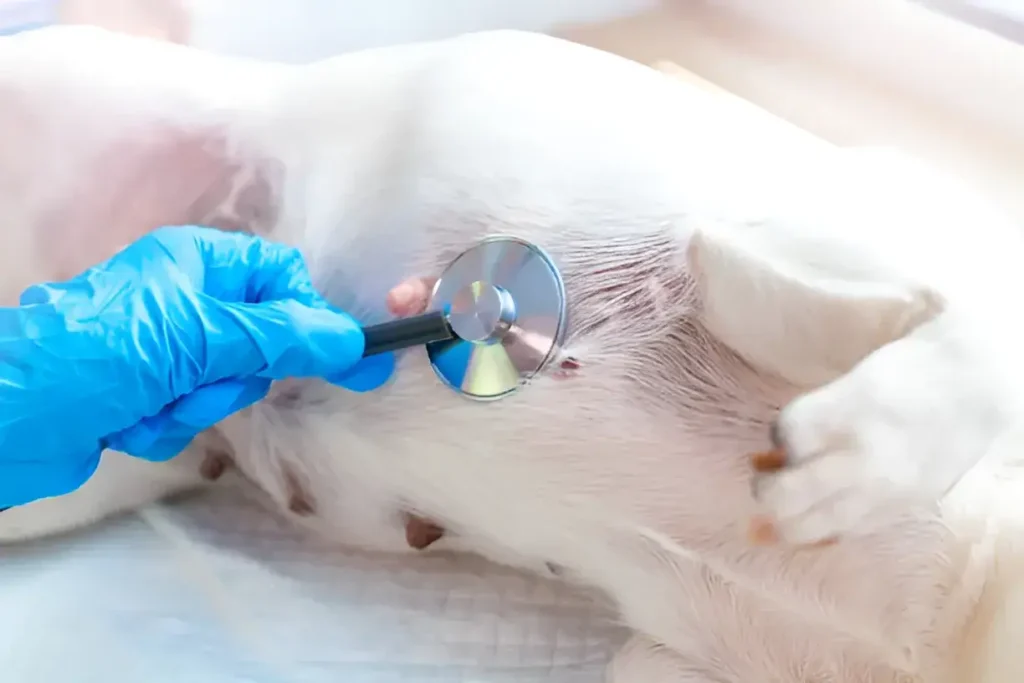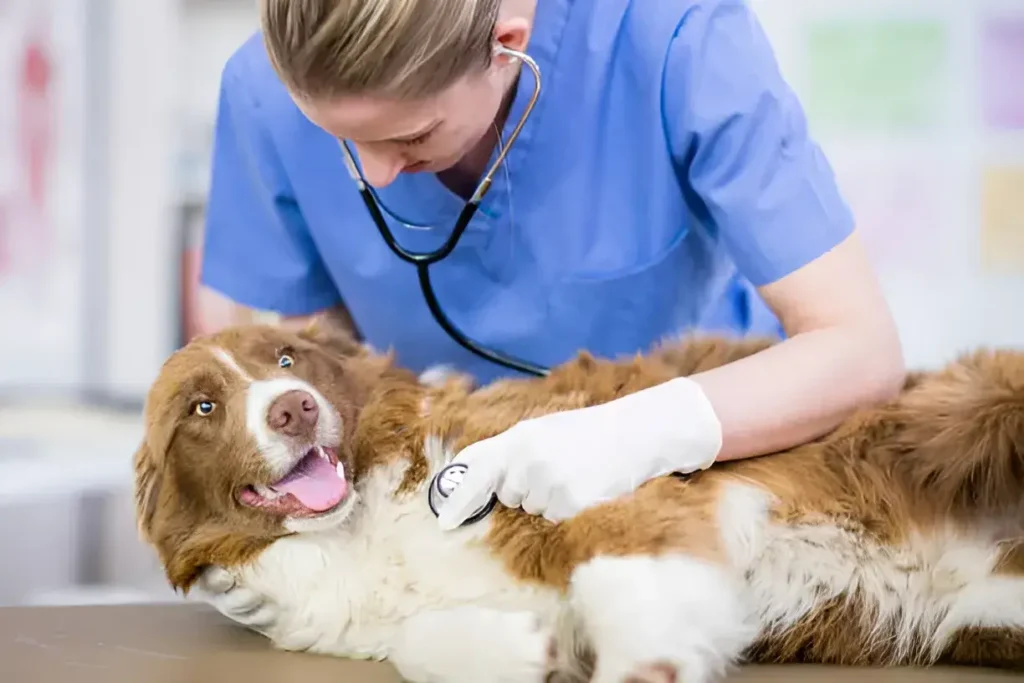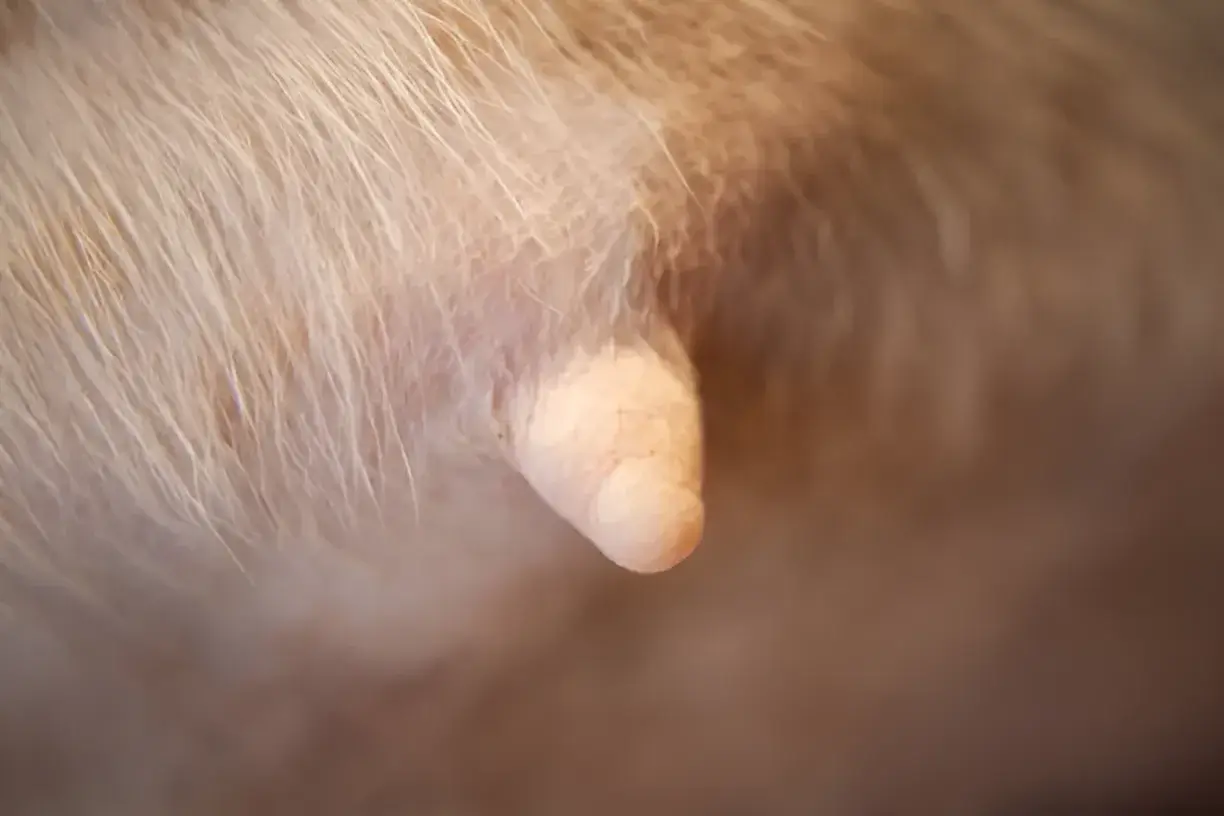If you’ve noticed blood coming from your dog’s nipple, it’s important to schedule a vet visit right away. Nipple bleeding is never normal and requires investigation to determine the cause and find the right treatment.
Understanding Your Dog’s Mammary Glands
Dogs have multiple pairs of mammary glands along their bellies. Both males and females have them, but they’re most developed in nursing females. Each gland has a nipple from which puppies suckle. Nipple bleeding, while alarming, can indicate various issues – some mild, others serious.
Possible Causes of Nipple Bleeding in Dogs
Mastitis: This is an infection and inflammation of the mammary gland, most common in nursing females. The gland feels painful, swollen, and may produce bloody or pus-like discharge.
Trauma: Nipples can be scratched, lacerated, or injured, especially in puppies roughhousing with their littermates. Outdoor dogs may get cuts or insect stings in the area.
Mammary Tumors: Both benign (non-cancerous) and malignant (cancerous) tumors can form in the mammary glands and often bleed. These may appear as lumps near the nipple.
Hormonal Imbalances: Fluctuations in hormones, particularly in unspayed females during their heat cycle, can sometimes cause nipple changes and mild bleeding.
Systemic Illnesses: Rarely, nipple bleeding can be a symptom of bleeding disorders or infections throughout the body.
What a Vet Will Do

Hands-on Assessment: Your vet will carefully examine your dog’s mammary glands, feeling for abnormalities like swelling, lumps, or tenderness.
Medical Background: They’ll inquire about any recent events that might be relevant, such as your dog’s reproductive history (if female), recent injuries, or changes in overall health.
Diagnostic Exploration: Depending on the initial exam, additional tests may be recommended:
- Bloodwork: This helps evaluate your dog’s overall health, looking for signs of inflammation, infection, or other underlying issues.
- Imaging: Techniques like ultrasound or X-rays provide a visual picture of the mammary glands and surrounding tissues, helping to identify potential tumors, infections, or other abnormalities.
- Biopsy: If a mass or lump raises suspicion, a small tissue sample might be collected for analysis to determine whether it’s benign or cancerous.
Home Care While Waiting For Your Vet Appointment:
- Unless your vet instructs otherwise, gently clean the bleeding nipple with mild, diluted antiseptic a few times daily.
- Use a cone collar to prevent your dog from licking or further irritating the area.
- Monitor for worsening bleeding, discharge, swelling, or increased pain, and update your vet.
Treatment Depends on the Cause
- Mastitis: Antibiotics, pain relief, and warm compresses are often the treatment.
- Trauma: Minor wounds heal with cleaning; more serious injuries may need stitches.
- Tumors: Treatment varies widely. Benign ones might be surgically removed; malignant ones require a more complex plan involving surgery, chemotherapy, or radiation.
- Other Causes: Treatment addresses the underlying illness.
Don’t Wait – See Your Vet

Nipple bleeding is never a “wait and see” situation. The sooner you get a diagnosis, the better the chances for successful treatment, especially if the cause is serious.
Prevention Tips
While not every instance of nipple bleeding can be avoided, here are some proactive steps:
Early Spaying: Having your female dog spayed before her first heat cycle significantly reduces the likelihood of developing mammary tumors.
Routine Inspections: Make it a habit to gently examine your dog’s nipples. Look for changes like redness, swelling, or any new bumps. This practice aids in early detection.
Don’t Delay Vet Visits: If you discover any lumps, bumps, or abnormalities in your dog’s mammary area, schedule an appointment with your veterinarian right away. Prompt evaluation is crucial.
Conclusion
Seeing blood coming from your dog’s nipple is understandably concerning. While mastitis is the most common cause, other possibilities need to be considered. Swift veterinary attention is essential for proper diagnosis and to put your beloved pet on the path to recovery.
The photo featured below the post headline is Credit: Basak Gurbuz Derman/Gettyimages
I hope you find this post helpful and informative. If Yes’ feel free to share it with your friends!
Frequently Asked Question
Can male dogs get nipple bleeding?
Yes, although less common, male dogs can also experience nipple bleeding. It’s often related to mammary tumors or underlying hormonal issues.
Should I express liquid from the nipple?
No, unless your vet specifically instructs you.
Is nipple bleeding always cancer?
No, thankfully, but it’s vital to rule out cancer.
When should I be concerned about my dog’s nipples?
Seek veterinary attention whenever you notice any of the following: bleeding, discharge (that’s not milk), swelling, redness, wounds, changes in size or shape of the nipple, or if your dog seems bothered or in pain around the nipple area.
Can female dogs get infected nipples?
Yes, particularly in nursing dogs (a condition called mastitis). However, infections can occur even in dogs who are not nursing.
What does a mammary tumor look like on a dog?
Mammary tumors can vary in appearance. They often present as lumps or bumps near the nipples, but they can also form within the mammary tissue itself. These lumps might be smooth or irregular, and can grow quickly. Some may have ulcerated (open) areas.
My dog is bleeding from her nipple and she just had puppies, what should I do?
Some spotting is normal after whelping, but significant bleeding needs veterinary attention. Contact your vet to discuss your dog’s condition and whether an exam is needed.

